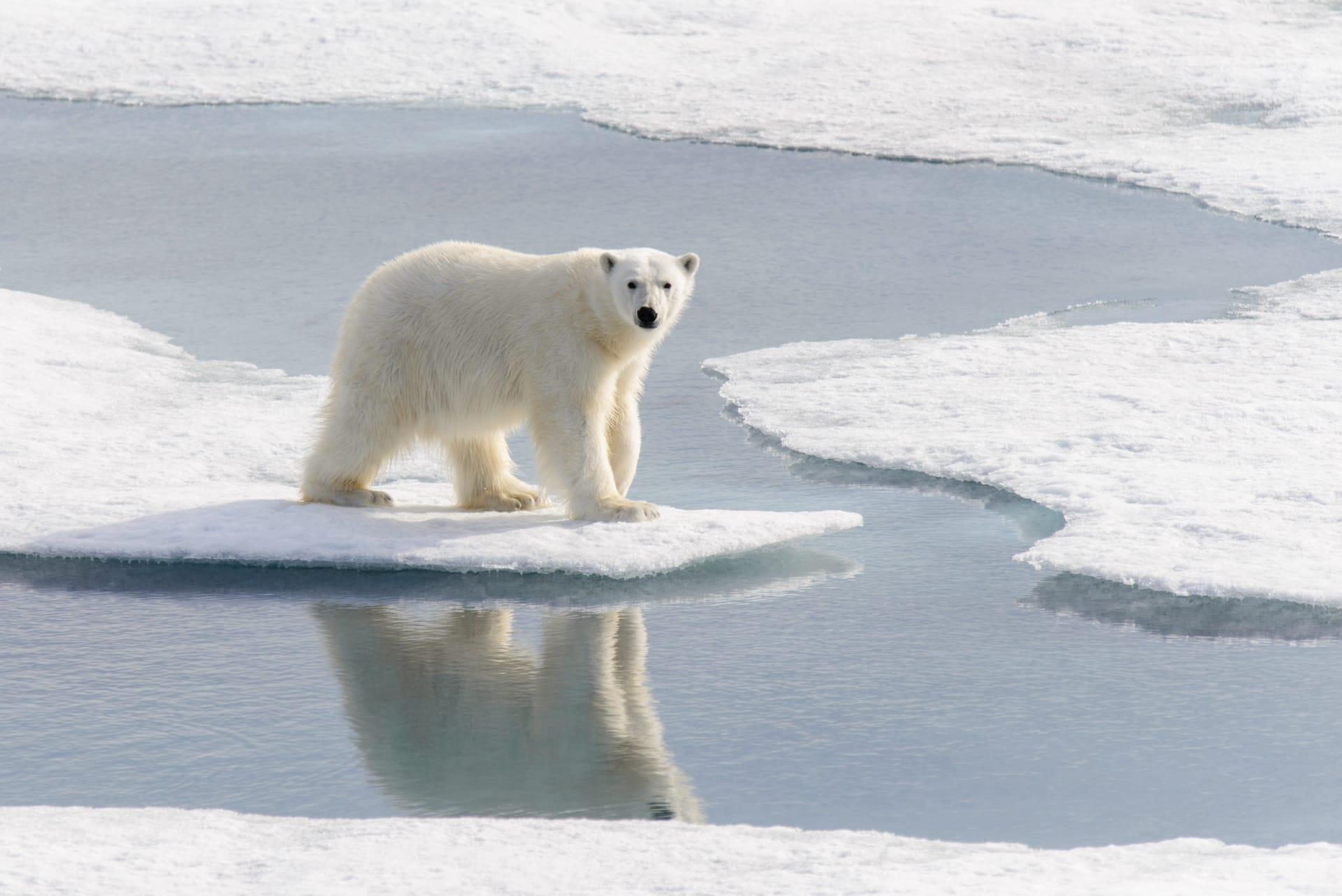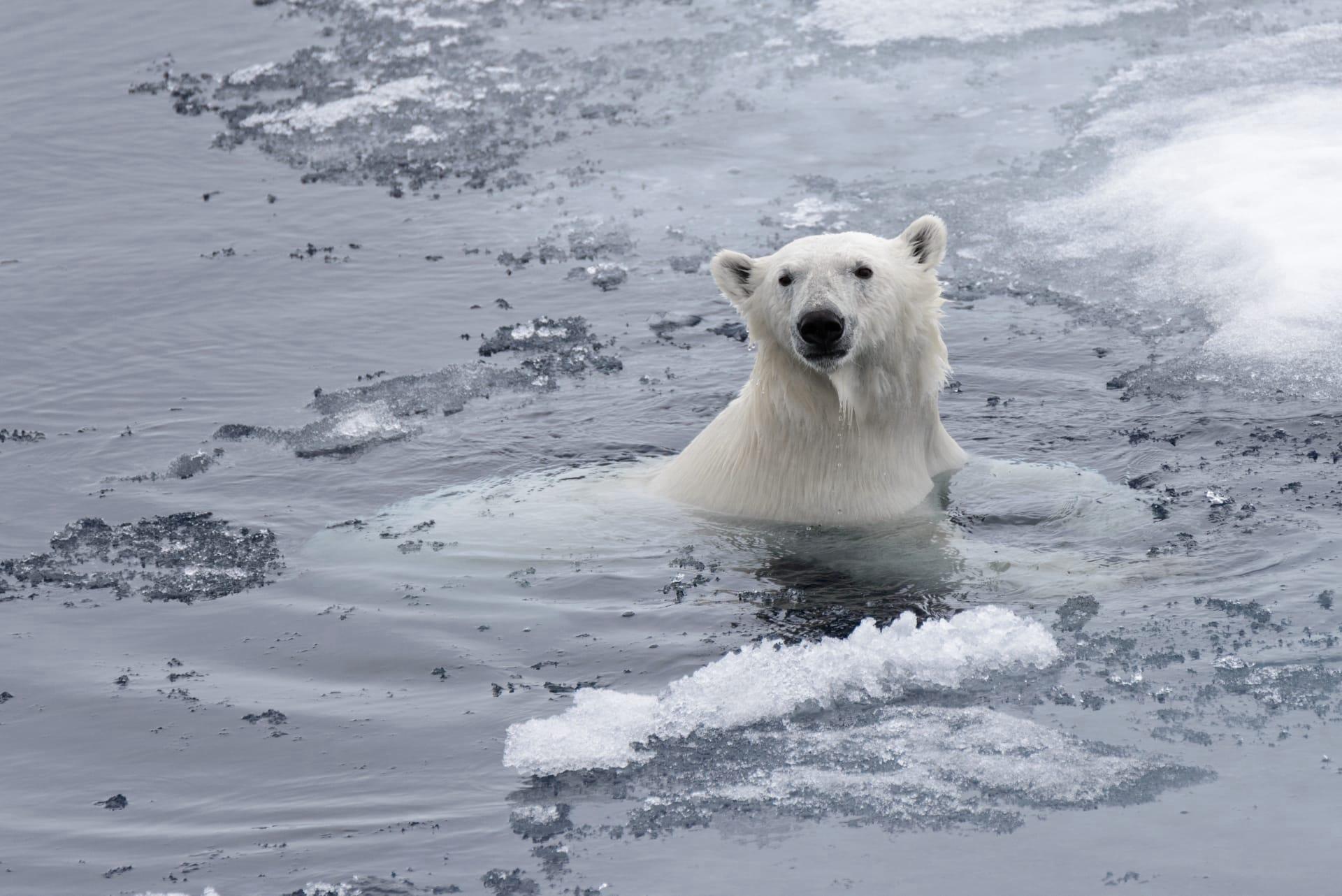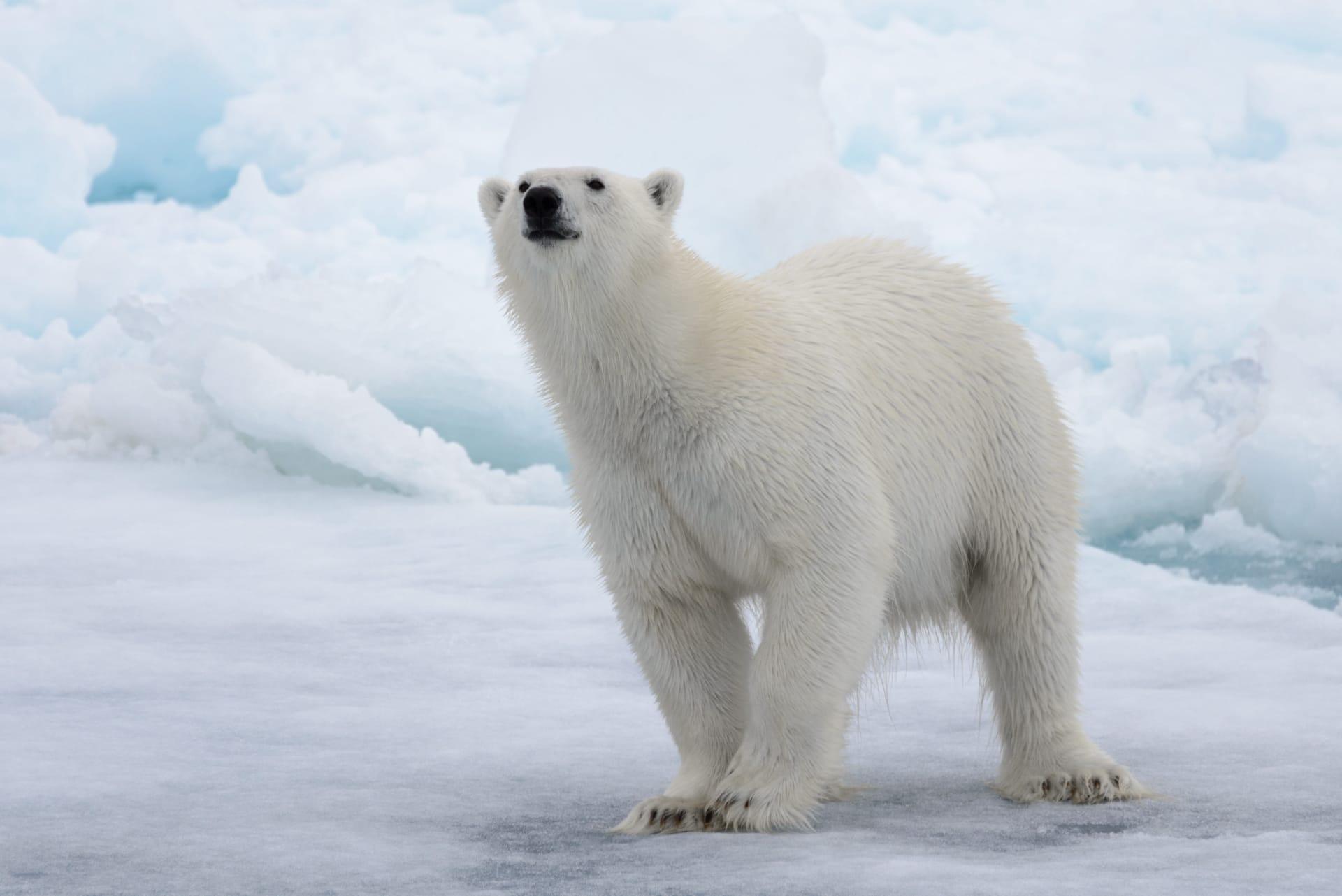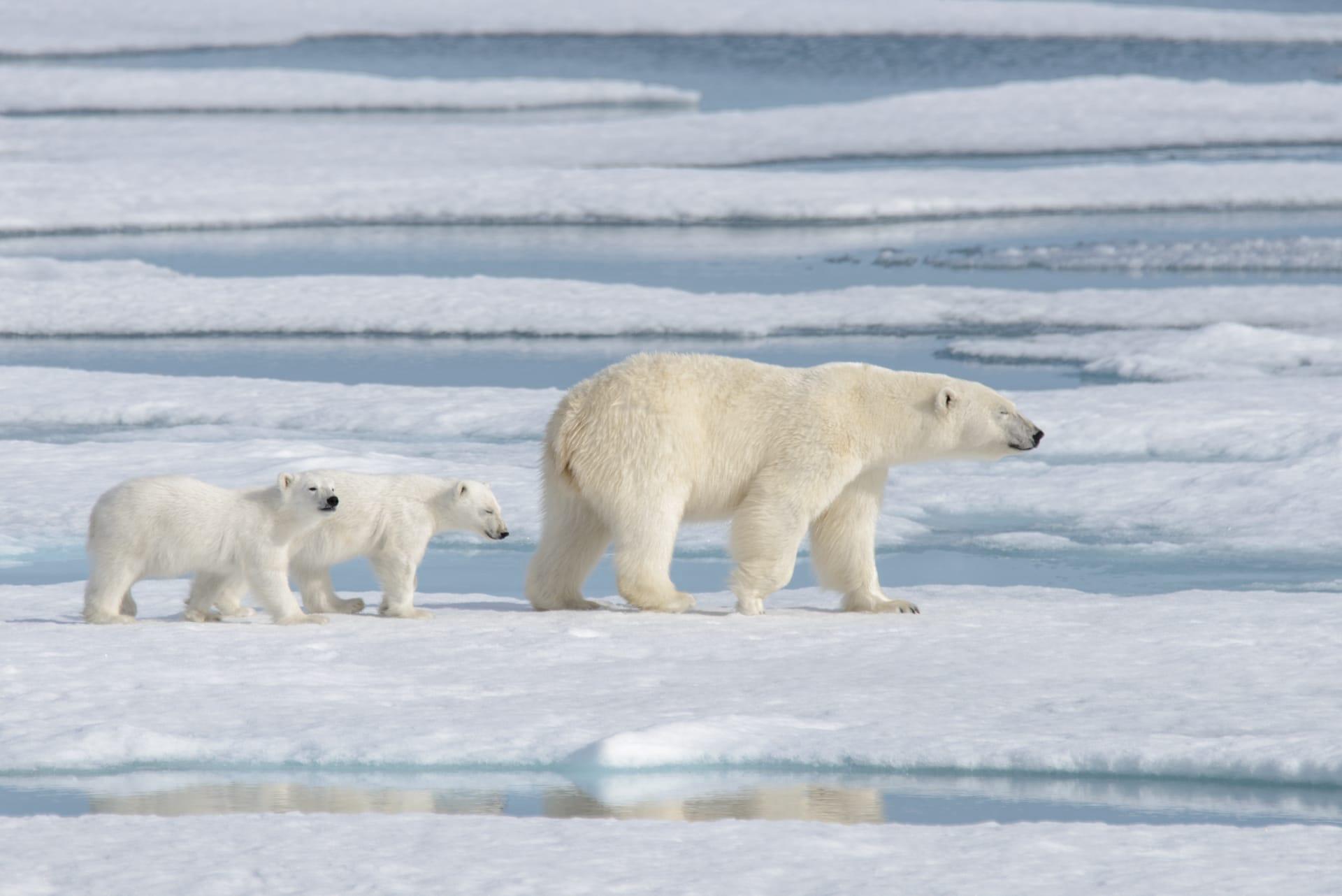Polar Bear Trivia
- Home /
- Trivia Question /
- Animal /
- Polar Bear Trivia
1
Question: How much can an adult polar bear weigh?
Answer: An adult male polar bear typically weighs between 900 to 1,600 pounds (410 to 720 kilograms), while females are about half that size, usually weighing between 400 to 700 pounds (180 to 320 kilograms). Their weight can vary significantly with the seasons, often gaining weight in the colder months when food is abundant.
Question: What is the primary diet of polar bears, and how much do they eat?
Answer: Polar bears primarily feed on seals, particularly ringed and bearded seals. They are skilled hunters, often waiting for hours by seal breathing holes to catch their prey. An adult polar bear can consume up to 20% of its body weight in a single meal. That means a 1,000-pound bear could eat 200 pounds (90 kilograms) of food at once!

2
Question: Do polar bears have white fur?
Answer: Contrary to popular belief, polar bear fur is not actually white. Each hair is a clear, hollow tube that reflects light, making the fur appear white. This adaptation helps them blend into their snowy and icy environment, providing camouflage while hunting.
Question: Can polar bears survive in warm climates?
Answer: Another common misconception is that polar bears can adapt to warmer climates. In reality, they are highly specialized for cold environments. Their thick fur and fat provide insulation in freezing temperatures, and their large paws are adapted for walking on snow and ice. Warm climates would cause them to overheat and struggle to find their primary food source, seals.

3
Question: How far can polar bears swim?
Answer: Polar bears are excellent swimmers and have been known to swim vast distances. They can swim continuously for days, covering distances of over 60 miles (100 kilometers) without rest. One polar bear was recorded swimming a remarkable 426 miles (687 kilometers) over nine days straight!
Question: Are polar bears solitary animals?
Answer: Yes, polar bears are generally solitary animals, except for mothers with cubs or during the breeding season. They roam large territories and have a low social interaction rate, preferring to hunt and live alone. However, they may congregate in areas with abundant food sources, like whale carcasses.

4
Question: How do polar bears keep warm in such cold temperatures?
Answer: Polar bears are well-adapted to survive in the Arctic's extreme cold. Their fur, which traps a layer of air to provide insulation, and a thick layer of blubber, up to 4.5 inches (11.4 cm) thick, help keep them warm. Their black skin absorbs heat from the sun, and their small ears and tail prevent heat loss.
Question: How long do polar bears live in the wild?
Answer: Polar bears typically live between 15 to 18 years in the wild. However, under favorable conditions, some polar bears can live up to 25 years. Their lifespan is limited by the harshness of their environment, the availability of food, and threats from humans, such as hunting and habitat loss.

5
Question: How do polar bears communicate with each other?
Answer: Polar bears communicate through vocalizations, body language, and scent markings. They growl, hiss, or roar to show aggression and chuff as a sign of submission or calmness. Mothers and cubs have a closer vocal communication, with cubs making soft sounds to get attention. Scent marking by foot padding is also used to communicate territorial boundaries and reproductive status.
Question: What impact is climate change having on polar bears?
Answer: Climate change poses a significant threat to polar bears. It leads to the loss of sea ice, their primary habitat, affecting their ability to hunt seals. Starvation, reduced cub survival rates, and an increase in land-based human interactions are some of the consequences. Scientists use these impacts as key indicators of the health of the Arctic ecosystem.